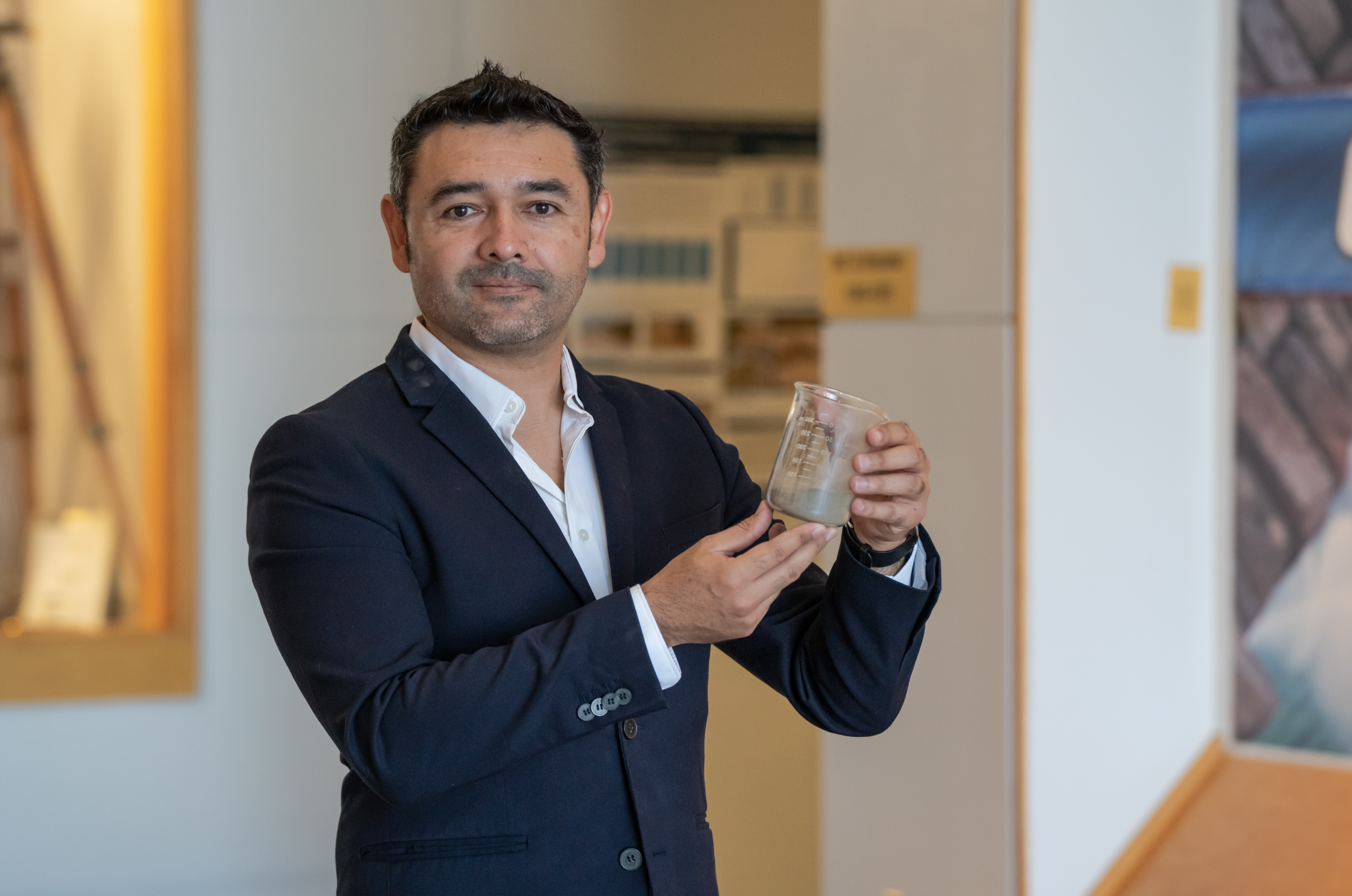
A new grant at New Mexico State University will help foster a research capacity at Minority Serving Institutions and be more competitive for research funding. Douglas Cortes, NMSU civil engineering associate professor, has received a two-year, nearly $500,000 grant from NASA’s Minority University Research and Education Project (MUREP). His project, titled MUREP Advancing Regolith-related Technologies and Education or MARTE, aims to meet the critical needs facing many Minority Serving Institution’s research and educational efforts in three key areas of importance to NASA: access to reliable and affordable regolith simulants, which are commercially available mixtures that mimic lunar soil, along with testing facilities that simulate relevant environmental conditions and analog testing sites.
The MUREP Space Technology Artemis Research or M-STAR awards are intended to help NASA support the Artemis mission’s promise to send the first woman and first person of color to the Moon and have a robust human and robotic presence there.
“The grant is geared toward building a research capacity at Minority Serving Institutions so we can better compete for funding from NASA’s Space Technology Mission Directorate,” Cortes said. “We’re looking at the technologies that are going to be needed to effectively have a human presence on the Moon and Mars, and I believe this is the beginning. I don’t see it as an end, I see it as a beginning of something much bigger.
“Our team of faculty brings together a wealth of knowledge in terrestrial granular media characterization, thermo-chemo-mechanical behavior, tool/robot interaction, performance improvement and resource extraction,” he said. “We also share the excitement about extending our work beyond our home planet in support of the exploration of the Moon and ultimately of Mars, and a clear commitment to supporting and promoting STEM education and outreach.”
The project is a university and industry partnership between NMSU, San Diego State University, Spaceport America, AeroAggregates and Russell Sand and Gravel. Additionally, three STEM outreach and education partners NMSU’s STEM Outreach Center, New Mexico Alliance for Minority Participation and New Mexico Space Grant Consortium and a representative from the Space Technology Mission Directorate-funded Lunar Surface Innovation Consortium at John Hopkins University will participate.

“This project grew out of research Dr. Cortes began in 2015 as part of the National Science Foundation Center for Bio-Mediated and Bio-Inspired Geotechnics, an $18.5 million NSF Consortium focused on the development and implementation of nature-inspired sustainable solutions to geotechnical engineering and infrastructure problems,” said College of Engineering Dean Lakshmi N. Reddi.
Cortes later received funding from NASA and the New Mexico Space Grant Consortium to develop facilities from which to deploy a new generation of light and small self-excavating subsurface characterization tools that emulate the earthworm’s amazing burrowing abilities that could easily be transported to the Moon and Mars.
“This line of research has great potential to serve advanced planetary research as well as develop the future generation of researchers with diverse backgrounds, which is a part of the NMSU mission,” Reddi said.
“We congratulate Dr. Cortes and NMSU for winning this grant. Our team is eager to grow our ties with New Mexico universities and work with students and professors as the space economy grows in our region,” said Scott McLaughlin, executive director of Spaceport America.
The research team plans to work with Spaceport America to design, build and instrument field-testing infrastructure to study regolith-based construction materials for lunar landing and launching pads. The team also will work with the New Mexico Space Grant Consortium to plan, support and pursue funding for a lunar pad student challenge. They have plans to develop significant STEM engagement opportunities for middle school, high school, undergraduate and graduate students.
In collaboration with industrial partners Russell Sand and Gravel and AeroAggregates, Cortes said the project will work to develop, manufacture and stockpile regolith simulants, a material that replicates soil from the Moon, which are needed for research and education purposes. One of the project’s goals is to establish a reliable, affordable, adaptable and scalable supply chain of New Mexico-made regolith simulants.
To achieve testing facilities that simulate lunar subsurface conditions, the research team plans to design, instrument, assemble and validate a modular dusty thermal vacuum chamber capable of producing a medium vacuum, 10-4 to 10-7 torr, and reaching a temperature of -50° Celsius while filled with lunar regolith simulant.
